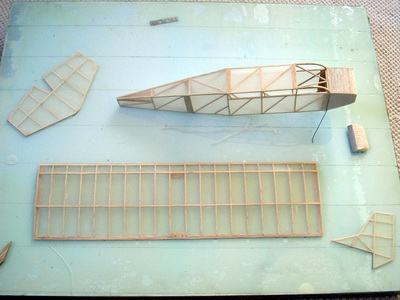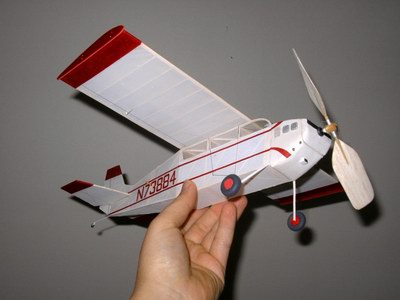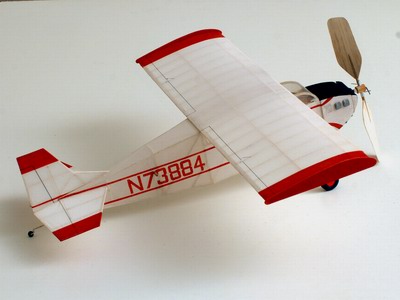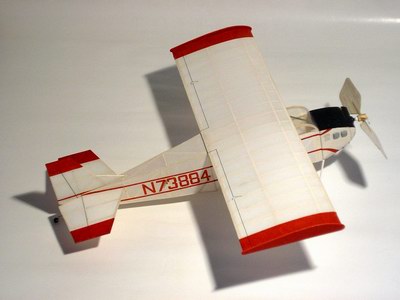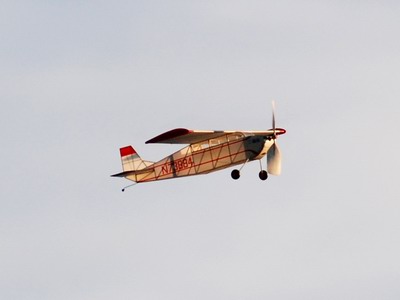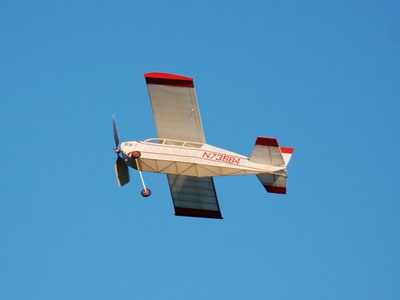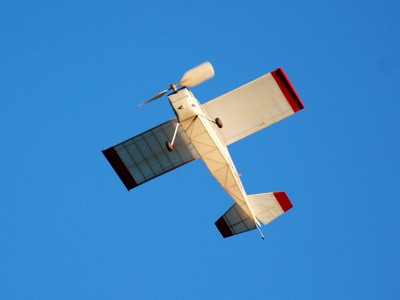Lacey M10
Click on an image to see it in high resolution
About the model
A peanut by Andrea Hartstein built from a plan by Jacques Delcroix. A few ribs have been added for scale
rib spacing, and the rear rubber anchorage was moved forward one bay. In addition, the fin outline was
changed slightly to fit the documentation.
The model is built using traditional balsa and tissue techniques, the covering being pre-shrunk to prevent
warping. The model was laquered with floor polish (Future) and air-brushed white, with registration letters and trim stripes cut
out from red tissue. The propeller blades are carved from balsa, as detailed in the plan.
The model proved very easy to trim (well, it is a Lacey!), and flies well both indoors and outdoors. It has won several outdoor competitions, and tolerates wind quite well in spite of being a peanut.
Some data:
Span: 33 cm
Weight (without rubber): 12.1 grams
Best flight outdoors: 2½ minutes (in thermal)
Best flight indoors: 80 sec
About the origial
The Lacey M-10 was designed by Joe Lacey, and made its first flight in 1962. It was intended to be
a practical homebuilt machine; car-towable, and with a cabin that doubles as sleeping compartment.
The wing can be swung to lie along the fuselage for towing or parking. The wing is built mainly from wood, while the fuselage is a welded steel tube constrution.
Although Lacey sold over 1000 copies of his plans, only one other Lacey has been built, and that was by himself. That aircraft was initially powered by two VW-engines, but due to
poor performance the engines were replaced by a single conventional aircraft engine. That plane has also been fitted with Cessna 120 wings.
Scale documentation (3-views and photos) can be found in:
- Aeromodeller June 1999
- Building and Flying Indoor Model Airplanes by Ron Williams

